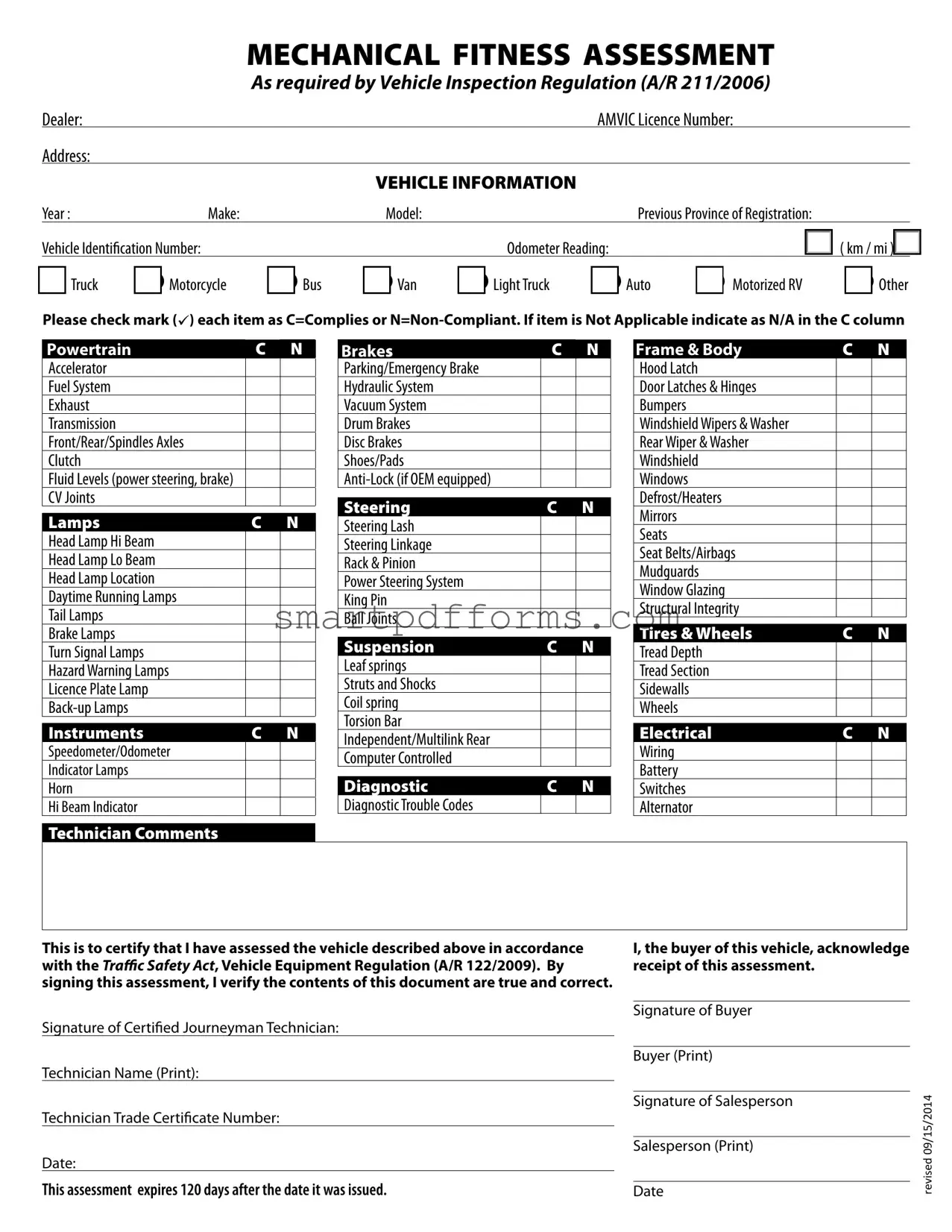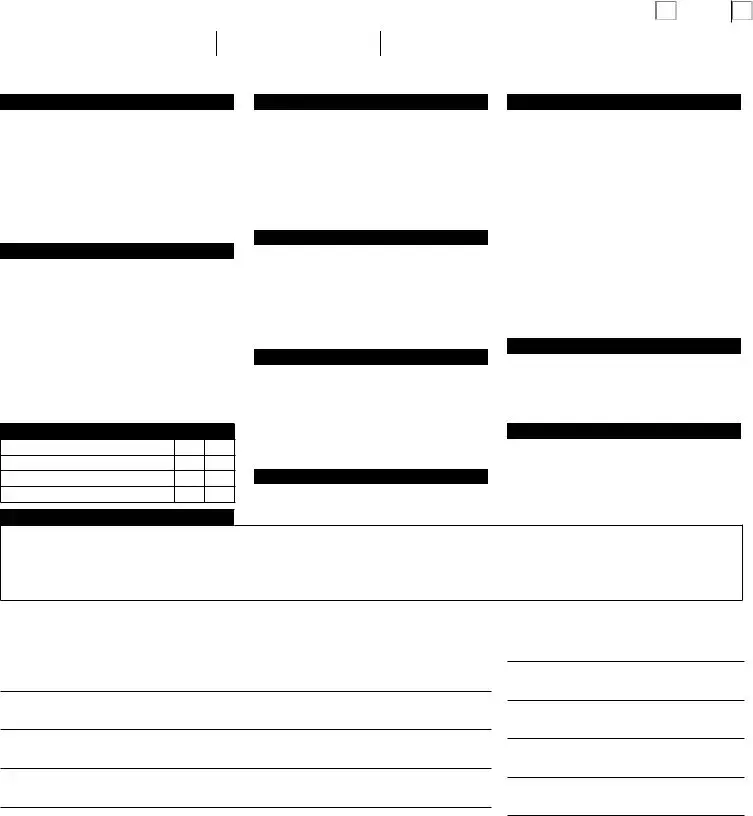In Alberta, ensuring a vehicle's mechanical fitness before it hits the road is a stringent process, encapsulated by the comprehensive Alberta Insurance Inspection form. This critical document, mandated by Vehicle Inspection Regulation (A/R 211/2006), plays an essential role in the verification process, outlining a vehicle's condition in exhaustive detail. The form captures the vehicle's identity—year, make, model, previous province of registration, vehicle identification number, and odometer reading—before delving deep into its mechanical and structural integrity. It lists various components under categories such as Powertrain, Lamps, Brakes, Steering, Suspension, Diagnostic, Frame & Body, Tires & Wheels, and Electrical, requiring each to be marked as compliant, non-compliant, or not applicable. This thorough assessment is conducted by a certified journeyman technician, whose signature certifies the accuracy and truthfulness of the inspection. Furthermore, the document’s lifecycle is time-bound, with its validity expiring 120 days post-issuance, demanding timely action from all parties involved—the technician, buyer, and salesperson, each of whose acknowledgement and signature are integral to the completion of this process. The form, a testament to Alberta's commitment to road safety and vehicular reliability, encapsulates a crucial step in the vehicle acquisition process, providing buyers with assurance of their vehicle's mechanical fitness as required by the Traffic Safety Act, Vehicle Equipment Regulation (A/R 122/2009).

